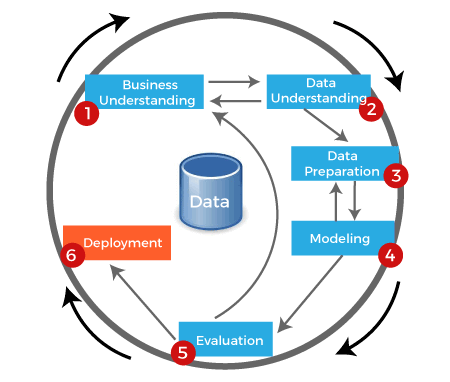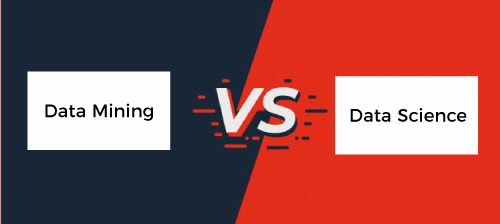Difference between Data mining and Data ScienceData mining is a process of extracting useful information, patterns, and trends that go beyond sample analysis from large databases and presenting relevant and usable information that can be used to solve business problems. In contrast, data science is defined as the process of obtaining valuable insights from structured and unstructured data by using various tools and techniques. Read on the given article to know the difference between data mining and data science. What is Data Mining?Data mining is a process of extracting useful information, patterns, and trends from raw data. Data mining uses sophisticated mathematical algorithms to divide the data and evaluate the probability of future events. There are different types of services in data mining processes, such as text mining, web mining, audio, video mining, pictorial data mining, and social network data mining. Data mining is done through simple or advanced software. Data mining is called Knowledge Discovery in Data (KDD). These are the given steps involved in the process of data mining 
Business Understandings: Prominently, the main aspect is understanding the objective and work. The objective of the business is introduced, and the significant factors that help to achieve the target are discovered. Data Understandings: Data collection is taken in this step, and all the gathered data is accumulated in the tool (if you are using any tool). Then, the data is listed with its source data, location ,and how it is achieved, if any problem occurred, data is visualized and quired to check its completeness. Data Preparation: Data preparation involves selecting useful data, cleaning the data, constructing attributes from data, and data integration from multiple databases. Modeling: Modeling involves selecting data mining techniques, for example, decision tree induction, generation of test design for evaluation of the selected model, creating a model from the sets of data, and assessing the created model with experts to know the result. Evaluation: As the name suggests, evaluation determines the degree to which the resulting model meets the business demands. It is done by testing the model based on real applications. Deployment: In this stage, a deployment plan is made, strategy to maintain and monitor the data mining model results check the usefulness is formed. Applications of data mining
Market Analysis: A market analysis provides a wide range of data to help you in planning your marketing strategy. While the data related to the market size may enable you to decide whether the market is good for investing in or not, you also need to know how the market works. Financial analysis: The banking and finance system relies on good-quality, accurate data. In loan departments, the data related to finances and users can be used for multiple purposes, such as calculating credit ratings. Higher Education: As the requirement for higher studies increases worldwide, institutions are looking for multiple solutions to cater to the rising needs. Institutions use data mining to analyze which students would enroll in a specific program, who would need more assistance. Fraud detection: The mechanisms used to detect fraudulent activities proved time-consuming. After the introduction of data mining, fraud detection has become easier. Data Mining has made it easier to identify the patterns and help to take steps to ensure the privacy of user's information. What is Data Science?Data Science combines several aspects of Data such as Technology, Algorithm development, and data interference to study the data, analyze it, and find innovative solutions to difficult problems. Data Science is all about Analyzing data and driving for business growth by finding creative ways. In other words, we had a lot of data with us, but we were not able to find out any insights from it. The need to understand and analyze data to make better decisions is what gave birth to Data Science. Applications of Data ScienceHealthcare: The application of data science across various sectors is growing tremendously. Healthcare is one of the major sectors that is being transformed gradually by data science, Internet search: Many search engines like Yahoo, Google, and Bing use data science algorithms to deliver the best output for our search query within the second. Fraud and Risk detection: Data science gives creative, scientific, and investigative thinking to big data. The data is drawn randomly from the various sectors and platforms like surveys on phones, emails, social media platforms, etc. Image recognition: In this digital era, data science tools have started recognizing the human face with all the pictures available in its database. Difference between data science and data mining
Next TopicData Mining vs Statistics
|
 For Videos Join Our Youtube Channel: Join Now
For Videos Join Our Youtube Channel: Join Now
Feedback
- Send your Feedback to [email protected]
Help Others, Please Share










